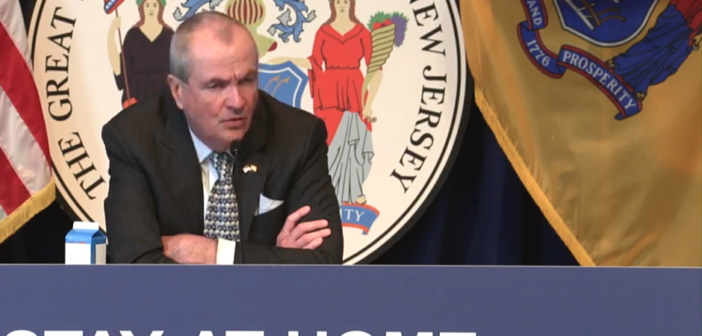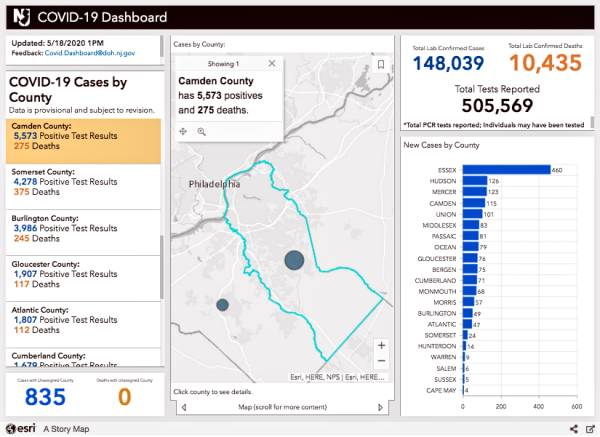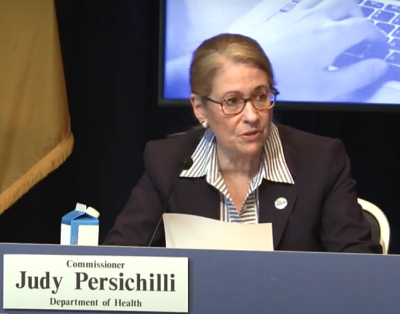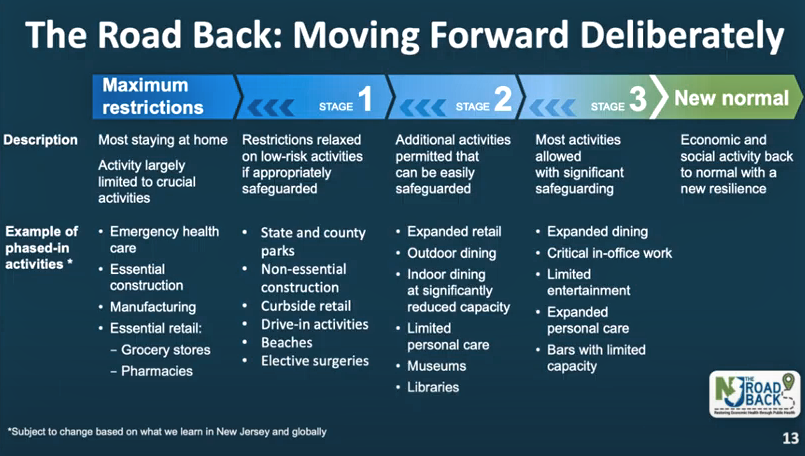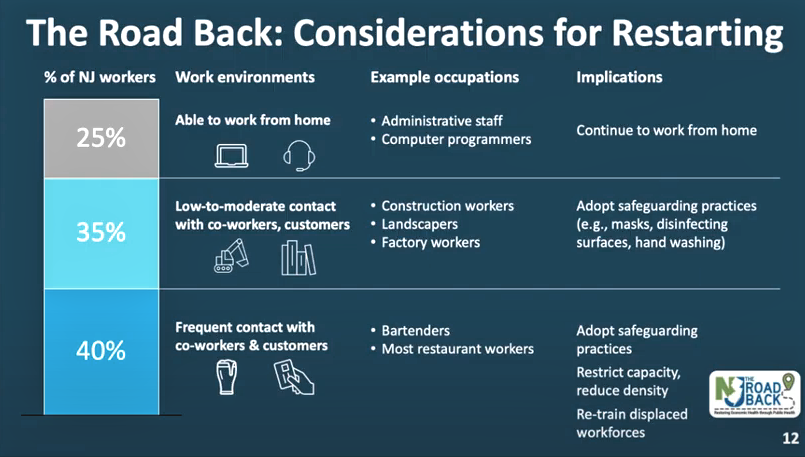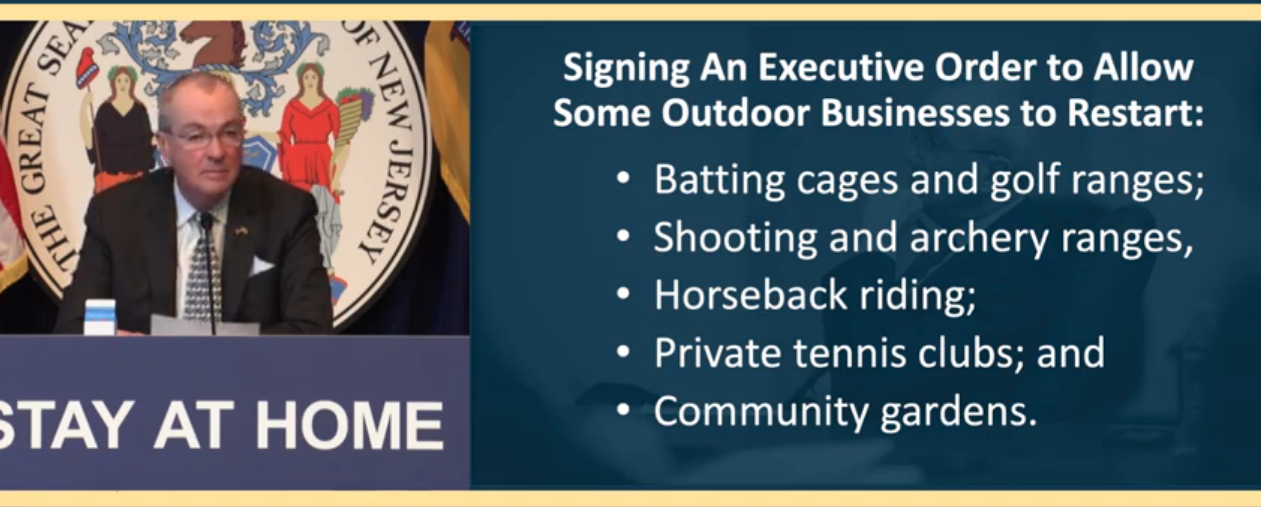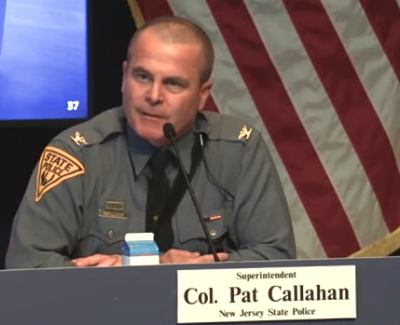Plus: 11 children have been diagnosed with multisystem pediatric inflammatory disorder. All were hospitalized, seven have been discharged, and nine are COVID-19-positive.
By Matt Skoufalos | May 18, 2020
Another 1,735 New Jersey residents have tested positive for novel coronavirus (COVID-19), bringing the statewide total to 148,039 cases, Governor Phil Murphy reported Monday.
Sadly, 83 more residents perished from complications related to the virus, bringing the statewide death toll to 10,435 lives lost during the pandemic
COVID-19 cases are doubling at least every 30 days throughout all of New Jersey save Cumberland County, which stands at a 29-day rate.
The statewide average of spot positivity testing is at 12 percent as of May 14, and per capita regional hospitalizations are converging at comparable levels across North, Central, and South Jersey.
Spot positivity is a snapshot statistic, and the state’s report excludes serology tests, which can confirm the presence of COVID-19 antibodies but not whether the patient actively has the virus.
Throughout New Jersey, 3,509 people are hospitalized with a case of COVID-19, or while awaiting confirmation of their symptoms. Of those 3,509 patients, 1,053 are in intensive or critical care; 819 of ICU and critical-care patients (78 percent) are on ventilators, both continuing downward trends.
In the past 24 hours, 71 New Jersey hospitals admitted 334 new COVID-19 patients and discharged 190 others, either to a lower-acuity care setting or to their homes.
Across New Jersey, 527 long-term care (LTC) centers have reported at least one case of COVID-19, and account for 28,136 infected people statewide (19 percent of total cases) and 5,408 deaths (52 percent).
Of 658 veterans residing in a state-run home, 378 residents have tested positive for the virus, and 142 have died from complications related to the virus.
At state-run psychiatric facilities, 209 of 1,240 patients have tested positive for COVID-19, and 13 people have died from complications related to the virus.
Forty patients are presently receiving care at one of the state’s field medical stations, which have served 449 people in total.
New Jersey Health Commissioner Judy Persichilli also noted 11 children have been diagnosed with multisystem pediatric inflammatory syndrome, also described as Kawasaki disease.
Aged 3 to 18, nine of them are positive for COVID-19. All were hospitalized; seven have been discharged.
Path to reopening continues
As several of New Jersey’s “health crisis indicators” have fallen by 50 percent since their peaks this spring, Murphy said the state is proceeding with its reopening plan, “The Road Back.”
The governor said that residents should expect to see permanent public changes not unlike those safety mechanisms put into place in the travel industry after the September 11, 2001 terrorist attacks. Workplace and public temperature and symptom checks, sanitization, and face-masking are just a few examples of such “new-normal” behaviors.
“As in the time since 9-11, our singular goal will be to prevent another attack by COVID-19.”
As outlined by the governor Monday, “The Road Back” will progress along a three-stage plan for returning to business as usual “until a proven vaccine is in our midst or proven therapeutics are widely available,” Murphy said.
Officials “aim to move through each stage as quickly as we can,” he said, but “we are preparing for a responsible process.”
“Our goal is to protect our workforce,” Murphy said. “The more regular your contact with customers, the greater the safeguards that will be necessary.”
About one-quarter of the state workforce that can work from home, and likely has been since the outset of the pandemic, should expect to do so “for the foreseeable future,” the governor said.
“The hardest nut to crack is those who work indoors,” he said.
Another 35 percent of those working in jobs with “low to moderate contact with coworkers and customers,” like landscaping, factory, and construction work, should expect to adopt masking, hand-washing, and frequent sanitization practices in their daily routines.
The 40 percent of workers who are “engaged in significant contact with customers,” like bartenders, restaurant workers, and those in personal care businesses, should expect to adopt those safeguards as well as reduced capacity in their workplaces.
The governor also acknowledged that some workers in these high-contact sectors could lose their jobs if this is the case, and retraining for different job sectors would be made available to them.
New Jersey is currently in the first of Murphy’s three-stage plan, which allows for elective surgeries, non-essential construction, curbside retail, drive-in activities, and the reopening of parks, beaches, and lakefronts because “outside right now is safer than inside,” the governor said.
In that vein, Murphy signed an executive order Monday allowing outdoor activities like batting cages, driving ranges, shooting and archery ranges, horseback riding, private tennis clubs, and community gardens to reopen Friday, May 22. Golfers also may now tee off in foursomes, he noted.
The second stage of “The Road Back,” which describes a broader restart of the state economy, focuses on industries and activities “in which social distancing can be most readily maintained and public health and safety can be most readily protected,” the governor said.
Included in the second stage are things like: expanded retail operations, outdoor dining and the potential for limited-capacity indoor dining, limited personal care businesses, and potentially museums, and libraries.
“We look forward to a time when our kids may be able to have limited summer camps and educational experiences,” as a precursor to whatever form the fall semester of education will look like, Murphy said.
The threshold for Stage Three includes “sustained improvements in public health indicators,” such as a robust testing and contact tracing program, workplace safeguards, and plans for the safe reopening of child care, schools, and public transit.
Stage Three also presumes a resilient healthcare system prepared to handle any spike in COVID-19 cases, and continued general compliance with public health orders.
In a statement, Murphy also warned that if public health indicators, workplace safeguards, or compliance “worsen on a sustained basis, New Jersey will be prepared to move back to more restrictive stages as well.”
“We’re painting a path,” he said; “this is not a life sentence. We’re going to take other steps this week.”
‘A very violent weekend’
Finally, New Jersey State Police Col. Pat Callahan noted, “It was a very violent weekend in the state of New Jersey,” with 15 shooting victims in a 48-hour span, two of them fatal.
“No nexus to the pandemic, but certainly a tragic weekend in New Jersey,” Callahan said.
Police are looking at the data to see whether any broader trends might emerge, he said.
Read our ongoing round-up of COVID-19 coverage here.
Please support NJ Pen with a subscription. Get e-mails, follow us on Facebook, Twitter, and Instagram, or try our Direct Dispatch text alerts.

